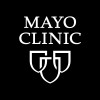
Desloratadine With Oxybutynin for the Treatment of Seasonal Allergic Rhinitis and Post-Nasal Drip...
Post-nasal DripSeasonal Allergic Rhinitis1 moreThis was a 1-week study of desloratadine (DL) plus oxybutynin (OXY) at two dose levels in the treatment of post-nasal drip in participants with seasonal allergic rhinitis. Participants received either desloratadine twice a day, oxybutynin twice a day, desloratadine plus lower-dose oxybutynin twice a day, desloratadine plus higher-dose oxybutynin twice a day, or placebo for 7 days.

HRCT, CT Cisternography and MR Cisternography in Assessment of CSF Rhinorrhea
Imaging of Active CSF RhinorrheaTo assess the diagnostic accuracy of combined high resolution CT, CT cisternography and MR cisternography in pre operative assessment of active CSF leak, compared by endoscopic sinus surgery.

Evaluation of Efficacy and Safety of Tablets of Paracetamol, Dimethindene Maleate and Phenylephrine...
Upper Respiratory Tract InfectionNasal Congestion2 moreThe study is a clinical evaluation of an over the counter (OTC) combination product containing paracetamol (500 mg), dimethindene maleate (1 mg), phenylephrine hydrochloride (10 mg) compared to paracetamol (500 mg) alone in the treatment of nasal congestion, rhinorrhea, sneezing and other symptoms due to upper respiratory tract infection (URTI).

Safety Trial of Atrovent® in Pediatric Patients With Rhinorrhea Associated With a Common Cold or...
ColdStudy to determine the safety of Atrovent Nasal Spray 0.06% in pediatric patients (ages 2-5 years) with symptoms of rhinorrhea associated with a naturally occurring common cold or from symptoms of rhinorrhea associated with allergies

Capsaicin Cough Threshold in Chronic Cough Due to Postnasal Drip
Post Nasal DripThis study is being done to find out why some people with mucus dripping down the back of their throat have a nagging cough while others do not cough.

A Randomized Double Dummy Double Blind Dose Determining Place-bo Controlled Study to Evaluate Efficacy...
Chronic RhinitisThe study will be conducted in two phases. First phase will be 16 weeks study to assess the safety, efficacy & to determine the most appropriate dose. Will consist of following visits. Phase II (Extended Follow-up): At the end of Day 112, an interim analysis will be conducted to assess the sustained efficacy of the investigational product and accordingly the study will enter into phase II.
